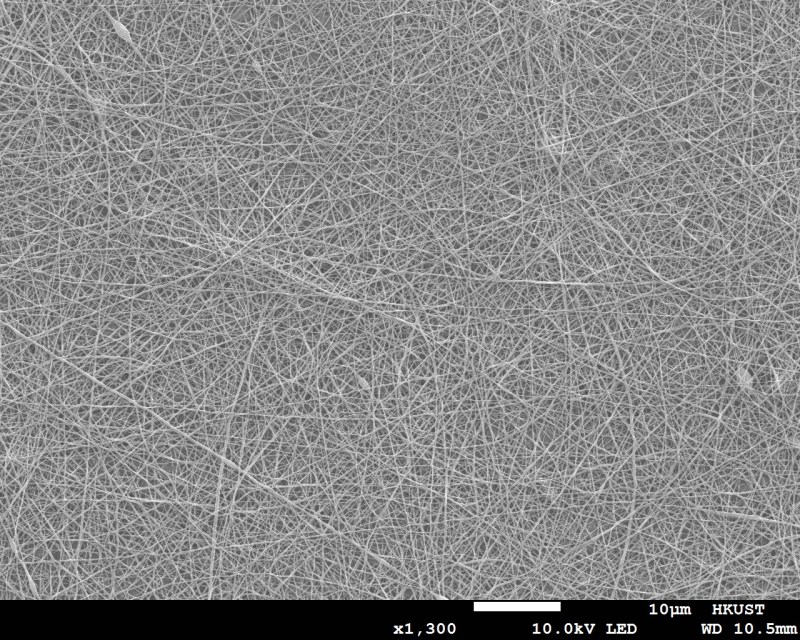The use of disinfectants is not a new thing, but a major disadvantage with most common disinfectants is that they are only effective in the short term. After applying bleach, alcohol or other disinfectant to the surface, the disinfectant’s effect quickly fades as the liquid evaporates. Ideally the disinfectant would remain on the surface, ready to disinfect when needed.
According to researchers at the Hong Kong University of Science and Technology (HKUST), the solution may lie in a heat-sensitive coating that releases disinfectant when it’s needed. This Multilevel Antimicrobial Polymer (MAP-1) can remain effective for as long as 90 days, depending on how often the surface is touched or otherwise used.
MAP-1 consists out of polymer strands of a material that prevents viruses and bacteria from attaching to its surface, while disrupting its outside surface. Effectively this has the potential to inactivate (kill) most viruses and harmful bacteria that come into contact with it.
MAP-1 is currently being deployed in Hong Kong, where public places such as schools, malls and sport facilities have had the coating applied. It costs between US $2,600 and US $50,000 to treat an area, which is not cheap, but would be cheaper than shutting down such a facility for regular surface disinfecting.
Although it still has to be determined that MAP-1 is as effective as hoped, it is another example of an antimicrobial surface, a material that is designed to be as incompatible with sustaining viruses and bacteria as possible. In the past copper and its alloys have been commonly used for this purpose, but a polymer coating is obviously more versatile. From the point of view of today’s pandemic, making surfaces incapable of hosting viruses definitely can be regarded as highly necessary.
(Pictured: a MAP-1 coating on a surface, courtesy of HKUST)
















asbestos for viruses. cool. wonder how good it is at messing up humans long term.
The initial expense may not be so large for a whole building, but this coating would have to be inspected for wear and eventually retouched, in some surfaces a lot sooner than others. A lot of surfaces like merchandise can’t be coated.
A manual wipe with disinfectant doesn’t require shutting down anything but can be imperfect. Nebulization sounds like a decent alternative.
Or just use brass or copper.
the door handles and what not in hospitals are already supposed to be constructed of metals that have similar properties…. but i doubt they actually drop the coin to use something that would literally last generations. it’s all about cheap garbage and funneling humans through our healthcare system like cattle. Not to mention, where you gonna get brass and copper… yup, china. If you find an american made brass door handle, you’ll have to put a second mortgage down on your house just to buy ONE, let alone an entire hospital’s worth. Literally cannot find anything these days that’s made to last more than 15 minutes without selling your soul to the devil. asbestos is cheap, and let’s face it, the people paying for the up front cost could give two shits less about the actual health of other humans.
So you’re saying it’s cheaper just to glue pennies to everything?
Doesn’t have to be solid brass, what about just electroplating a cheaper cast metal?
I came here to say this. High copper brass is bacteriocidal and viricidal, quickly (three or four hours), and lasts for many years.
Those need a different kind of care. We’re not used to polishing vast swathes of metal surfaces these days, but they’d need it. Mostly when you see a lot of very shiny brass in a new installation it has a plastic coating which obviously doesn’t have the antimicrobial effect.
Copper doesn’t lose its virucidal attributes because it’s tarnished. That’s just an issue for vanity.
“MAP-1 consists out of polymer strands of a material …”
Proofreading fail?
I think it was a botched edit, changing “is made out of” to “consists of” but only removing “is made”
So what disinfectant does it use, and what are the prospects for developing/enhancing resistance.
What things will survive on/around it, and what kind of an microenvironment do they create?
Is it an environment which will allow some currently rare pathogens to dominate, or does it create an environment hospitable to mostly benign organisms?
Also we need to dust off that chopping board, cutting board research… the one that rehabilitated wooden chopping boards…. because the woods immune factors killed stuff off over time, while plastic boards didn’t. See what bare wood we should be lining railings with etc.
“most viruses and harmful bacteria” actually that would simply be almost *all* viruses & bacteria, including the ones that are good for you or benign and essential ecosystem denizens. Such tech is the equivalent of the USA covering Vietnam with agent orange just to kill a few recalcitrant communists. Any hooo you all should know by now how I think things should be handled, but in a recent update I point out that research has already shown that Lactobacillus plantarum HEAL9 and Lactobacillus paracasei 8700:2 reduce common cold infections in children, so why would you want to kill them *all* ?
Did not Corning Glass attempt to produce an anti bacterial/antiviral glass for use in cellphones within the last 5-6 years?